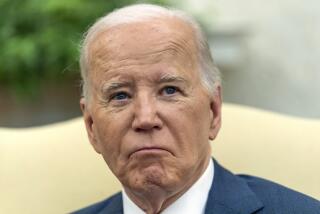Focus to Be on Areas Yet Untouched by Epidemic : National AIDS Training Effort Planned
- Share via
WASHINGTON — Federal health officials, recognizing that many communities untouched by the AIDS epidemic will encounter their first cases within the next few years, are planning a national training program to help physicians, nurses and others cope with AIDS patients, The Times has learned.
The program will deal with attitudes as well as procedures in the hope of avoiding the unwarranted fears that resulted in insensitive behavior toward early AIDS sufferers, officials said.
During the initial years of the epidemic--before much was known about how the deadly disease was spread--AIDS patients frequently were shunned by hospital personnel and others who refused to touch them or handle their food, linens or other items.
Misconceptions Rampant
“Misconceptions about how AIDS is transmitted are still rampant in the health care community,” said Dr. Allan Noonan, chief medical officer of the Health Resources and Services Administration, the Public Health Service agency that is designing the program.
In the five years since AIDS was first identified, studies and other evidence have shown overwhelmingly that AIDS cannot be contracted through casual contact and public health officials have said repeatedly that there is no danger for health care providers who follow appropriate precautions.
Walter Dowdle, the federal government’s coordinator for AIDS programs, said the government “hopes to avoid the same unfounded concerns that created problems” initially for AIDS patients and intends to draw on the experiences of cities that already have been hard hit by the epidemic, such as San Francisco and New York.
“We’re not talking about high-powered AIDS education--we’re talking about basic information to assist hospitals in handling their first AIDS patient,” Dowdle said.
Three Training Centers
The program will begin with three training centers next year, followed by an additional six or seven centers in 1988, Carlson said. The agency has asked for $1.9 million for fiscal 1987, which begins Oct. 1, and $6.6 million for fiscal 1988, he said.
The idea, which Dowdle described as still in the “concept” stage, evolved from a meeting sponsored by the Public Health Service in June to develop a five-year strategy for dealing with AIDS. After that meeting, the federal government projected a cumulative total of 270,000 AIDS cases by 1991, with up to an estimated 91,000 new cases diagnosed during that year alone.
Furthermore, the government has predicted that the disease will spread geographically beyond the states now most affected to areas that have seen few cases of the invariably fatal disease.
Collaborative Efforts
Noonan said the training centers probably will be established in regions where they can each serve a three- or four-state area and will be set up “collaboratively with other parts of the community, such as health departments and hospitals.” Also, he said, it is hoped that they will reach more than just “those in places that haven’t gotten involved in the epidemic yet.”
“It’s not just medical personnel we’re talking about,” Noonan said, “but also volunteers who come into the homes of AIDS patients or teachers who might be seeing kids with AIDS in kindergarten or undertakers who refuse to do anything with people who die of AIDS. We’re also talking about psycho-social and legal issues. We want to tell the professionals what their role is and what the effects of this disease are going to be on them--and what the needs of the patient will be beyond the strictly medical.”
AIDS, or acquired immune deficiency syndrome, cripples the immune system, leaving the individual powerless against otherwise rare “opportunistic” diseases and neurological disorders. AIDS is caused by a virus and is spread through intimate sexual contact and through the sharing of unsterilized hypodermic needles. Thus far, it has primarily struck male homosexuals and bisexuals, intravenous drug users and their sexual partners.
More to Read
Sign up for Essential California
The most important California stories and recommendations in your inbox every morning.
You may occasionally receive promotional content from the Los Angeles Times.








